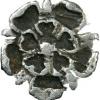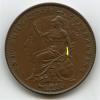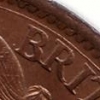|
|
The current range of books. Click the image above to see them on Amazon (printed and Kindle format). More info on coinpublications.com |
|
|


DaveG38
Accomplished Collector-
Content Count
1,706 -
Joined
-
Last visited
-
Days Won
18
DaveG38 last won the day on October 11 2022
DaveG38 had the most liked content!
Community Reputation
385 ExcellentAbout DaveG38
-
Rank
---

Recent Profile Visitors
-

Florin diameters
DaveG38 replied to david.bordeaux's topic in British Coin Related Discussions & Enquiries
It strikes me that the difference between some of these e.g. 29.24 and 29.25 is just the end result of the limit of tolerances in the strking process. 0.01 of a mm is scarcely visible it seems to me. -
I can recall seeing a 1954 penny on a stall in the indoor market at Barnstaple, some 10-15 years ago. Not sure if this was Paddy, but the stall was on the left immediately inside the main access door.
-

What auction houses and reputable shops should I be keeping my eye on?
DaveG38 replied to Master Jmd's topic in Beginners area
Sometimes I wonder if I took my degree in Chemistry. Hypo is Sodium Thiosulphate, not Hypochlorite. Duuhhh!! -

What auction houses and reputable shops should I be keeping my eye on?
DaveG38 replied to Master Jmd's topic in Beginners area
MT = Mint Toned, usually with Sodium Hypochlorite.. -

Happy Christmas to all Forum users
DaveG38 replied to secret santa's topic in Nothing whatsoever to do with coins area!
My dad was a postie back then, and often worked on Christmas Day, usually up to midday. He and my mum were grateful for the overtime and exceptional payments, but for me it meant I had to wait to open my presents.😟 -

Happy Christmas to all Forum users
DaveG38 replied to secret santa's topic in Nothing whatsoever to do with coins area!
Used to, in the 1950s. -
Just to whet your appetite, I have found that he was buried on 15 March 1832 at Rodborough near Stroud, so died not long before. Got several images of data concerning him. In one case, though, there is only a transcript, not an original document. Will have a bit more investigative fun in the morning. I'll forward data/docs as a PM to avoid cluttering this thread up with stuff.
-
I'll see what I can find, but will be tomorrow now, whilst my other half is watching the footie!
-
I do have some access, but my family is/was all UK Based, so I had no use for records from overseas. If you want to PM me, I'll see what I can find.
-
Even more simply, given that the opening post refers to an auction 'the previous Thursday', which auction house was operating on 23rd Nov?
-

Confirmation of Dies Please
DaveG38 replied to Kipster's topic in British Coin Related Discussions & Enquiries
I think we have the basis for a BNJ article developing on this subject. -

Confirmation of Dies Please
DaveG38 replied to Kipster's topic in British Coin Related Discussions & Enquiries
Clearly, the A is for the original die sinker Algernon, but he died, so Archibald took over. He thought he was better and didn't fancy his work being associated with that scoundrel Algernon, so he put the die letter to the other side of the lighthouse. Then along came Augustine who put his A anywhere he felt like, and didn't care what size it was. Sounds logical to me. Simples!! -
Whilst we are on 1964 sixpences, have you found the two varieties of the more common obverse 3 type? One has a thick rim, whilst the other has a thinner one.
-
I first started looking for one, around 1998, 5 years after I rekindled my interest in coins. I finally got one in 2021 , together with the other varieties of Eliz II sixpences, in an auction. Cost, allowing for rarity and pro-rata with other coins was around £20, including commission and postage. Some years ago, on here there was a collector named Gary (D?), who only collected 20thC and who sold his collection in one go, rather than split it. I don't know who bought it, and what happened to it, but the set of 6d's I bought seemed to correlate very well with those from his collection, so maybe I got the benefit of the eventual split up? Anyway, I'm afraid that I don't have a spare, and if my experience is anything to go by, it will take quite a time to find one. They don't turn up with dealers nor ebayers, probably because they are a bit obscure, and so it isn't easy to find one in the usual way. For the rarer 1964 variety, I found that grubbing through boot fair pots was the answer, so maybe this would work for the 1965 one. Best of luck.
-
Ah, sorry, I didn't see the title of the thread.
 Coinpublications.com
Coinpublications.com
.thumb.jpeg.5a0d637e4d370fa8958e9ea64ac28e68.jpeg)











